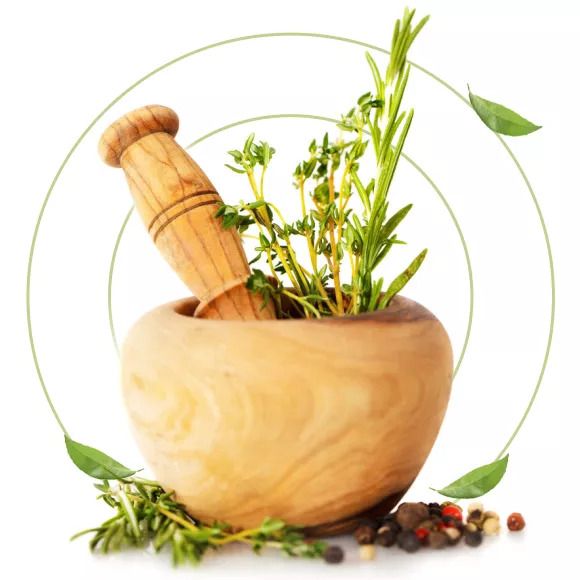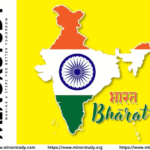🌿 Introduction: Ayurveda in India – The Eternal Science of Life
India is the birthplace of Ayurveda, the world’s oldest holistic healing system. More than just medicine, Ayurveda in India is a lifestyle philosophy, blending science, spirituality, and natural healing. For over 5,000 years, Ayurveda has been guiding people to live in harmony with their environment, body, and mind.
- 🌿 Introduction: Ayurveda in India – The Eternal Science of Life
- 📜 History of Ayurveda in India
- 📊 Timeline of Ayurveda in India
- ✅ Fascinating Facts About Ayurveda in India
- 🌟 Significance of Ayurveda in India
- 🙏 Observance of Ayurveda in Indian Life
- 🎉 Wishing in the Ayurvedic Way
- 📌 Important Points About Ayurveda in India
- 🔍 FAQs About Ayurveda in India
- ⭐ Honest Review of Ayurveda in India
- 🌍 Importance of Ayurveda in Indian Society
- 🧘 Daily Life Impact of Ayurveda in India
- 🌟 Conclusion: Ayurveda in India – A Legacy That Inspires the World
In India, Ayurveda is not merely practiced—it is lived. From household remedies like turmeric milk and tulsi tea to grand wellness retreats in Kerala, Ayurveda continues to shape health and wellness for millions. In this article, we’ll explore its history, facts, timeline, significance, observance, review, and daily life impact.

📜 History of Ayurveda in India
The history of Ayurveda in India is deeply rooted in Vedic traditions:
Vedic Origins (1500–500 BCE): Ayurveda finds mention in the Rigveda and Atharvaveda, which describe herbal remedies and chants for healing.
Charaka Samhita (1000 BCE): Written by Sage Charaka, this foundational text focuses on internal medicine, diagnosis, and preventive care.
Sushruta Samhita (600 BCE): Compiled by Sage Sushruta, this text is renowned for detailing surgical methods, including plastic surgery.
Buddhist Period (500 BCE–200 CE): Ayurveda spread across India and beyond, merging with Buddhist healing traditions.
Medieval India (500 CE–1200 CE): Ayurveda flourished with centers of learning like Nalanda University.
Colonial Period (1600–1900 CE): Ayurveda faced decline due to British promotion of Western medicine.
Post-Independence: The Indian government revived Ayurveda, establishing institutions like the Ministry of AYUSH.
Modern India: Today, Ayurveda is recognized globally and integrated with modern health practices.
📊 Timeline of Ayurveda in India
| Era | Key Development |
|---|---|
| 1500 BCE | Vedic references to herbs & chants. |
| 1000 BCE | Charaka Samhita – internal medicine text. |
| 600 BCE | Sushruta Samhita – surgical practices. |
| 200 CE | Ayurveda spreads to Sri Lanka & Tibet. |
| 500–1200 CE | Golden age of Ayurveda in Indian universities. |
| 1600–1900 CE | Decline during British rule. |
| 1947 onwards | Revival of Ayurveda in free India. |
| 2014 | Ministry of AYUSH established. |
| 2020 onwards | Ayurveda promoted globally as part of holistic health. |
✅ Fascinating Facts About Ayurveda in India
Ayurveda is over 5,000 years old and still practiced in daily Indian households.
Kerala is known as the hub of Ayurvedic treatments and therapies.
Ayurveda recognizes three doshas—Vata, Pitta, and Kapha.
Sushruta Samhita described 300+ surgical procedures and 120+ surgical instruments.
Over 5,000 herbs are recorded in Ayurvedic texts.
Ayurveda is officially recognized by the Indian Constitution under healthcare systems.
Indian households use Ayurvedic remedies daily (haldi milk, ajwain water, neem paste).
The Indian government observes National Ayurveda Day every year on Dhanvantari Jayanti.
Ayurveda emphasizes prevention before cure.
Modern Indian wellness tourism thrives on Ayurveda, attracting millions globally.
🌟 Significance of Ayurveda in India
Ayurveda’s importance in India goes beyond medicine:
Cultural Identity: It reflects India’s ancient wisdom and holistic traditions.
Preventive Healthcare: Promotes immunity, balance, and sustainable living.
Integration with Yoga: Ayurveda and yoga together form India’s health philosophy.
Economic Value: Boosts wellness tourism and herbal industries.
Mental Health Support: Provides practices for stress relief, meditation, and emotional balance.
Social Harmony: Encourages living in sync with nature, fostering eco-friendly habits.
🙏 Observance of Ayurveda in Indian Life
In India, Ayurveda is observed as part of daily living:
Morning rituals: oil pulling, meditation, and yoga.
Home remedies: turmeric for inflammation, ginger tea for digestion.
Ayurvedic massages: Abhyanga and Shirodhara, especially in Kerala.
Panchakarma therapies: detox practices followed in retreats.
Seasonal diet practices (Ritucharya) for health.
Celebrations: National Ayurveda Day honors Lord Dhanvantari, the divine physician.
🎉 Wishing in the Ayurvedic Way
In India, blessings often reflect Ayurvedic values:
“May you be blessed with balanced health, calm mind, strong immunity, and long life filled with harmony and joy.”
Such wishes show how Ayurveda is not just medicine but a philosophy of well-being.
📌 Important Points About Ayurveda in India
Recognized as “Science of Life”.
Encourages natural, herbal-based remedies.
Promotes Dinacharya (daily routine) and Ritucharya (seasonal routine).
Connected with Indian festivals and rituals.
A source of global wellness inspiration.
🔍 FAQs About Ayurveda in India
Q1. Who is considered the father of Ayurveda in India?
Sage Charaka is considered the father of Indian medicine, while Sushruta is the father of surgery.
Q2. Is Ayurveda only for Indians?
No. While rooted in India, Ayurveda is now embraced worldwide.
Q3. Is Ayurveda still relevant in modern India?
Yes, Ayurveda is integrated into healthcare, wellness retreats, and daily Indian life.
Q4. What is the role of AYUSH in Ayurveda?
The Ministry of AYUSH promotes Ayurveda alongside Yoga, Unani, Siddha, and Homeopathy.
Q5. Can Ayurveda cure chronic diseases?
Ayurveda helps manage and sometimes reverse chronic conditions through lifestyle changes and herbal remedies.
⭐ Honest Review of Ayurveda in India
👍 Positive Aspects
Deeply rooted in Indian tradition and culture.
Effective in managing stress, lifestyle diseases, and digestion.
Minimal side effects compared to chemical medicines.
Affordable and accessible to rural populations.
Supports India’s wellness tourism and economy.
👎 Challenges
Lack of standardized regulations in some practices.
Some results take longer than modern medicine.
Misuse by unqualified practitioners causes skepticism.
Final Verdict: Ayurveda in India is a time-tested, inspiring system of holistic health. While it may not always offer quick fixes, its long-term benefits are unmatched.

🌍 Importance of Ayurveda in Indian Society
Healthcare Alternative: Provides low-cost, natural remedies.
Cultural Preservation: Keeps India’s spiritual and medicinal heritage alive.
Economic Growth: Herbal exports and wellness tourism boost the economy.
Global Recognition: Ayurveda enhances India’s soft power internationally.
Eco-friendly Practices: Encourages sustainable living and respect for nature.
🧘 Daily Life Impact of Ayurveda in India
Everyday Indian life is influenced by Ayurveda:
Haldi doodh (turmeric milk) for immunity.
Neem paste for skin health.
Tulsi tea for cold and flu.
Chyawanprash for energy.
Oil massages for relaxation.
Yoga with Ayurveda for balance.
Even without realizing, millions of Indians live by Ayurvedic wisdom daily.
🌟 Conclusion: Ayurveda in India – A Legacy That Inspires the World
Ayurveda in India is not just history—it is living heritage. From Vedic scriptures to modern wellness retreats, Ayurveda continues to heal, inspire, and guide humanity.
At its heart, Ayurveda teaches:
👉 Health is not just the absence of disease—it is the presence of balance, vitality, and peace.
As the world seeks sustainable and natural solutions, India’s Ayurveda shines as a timeless treasure.
✨ May Ayurveda bless your journey with health, balance, and harmony! 🌿








